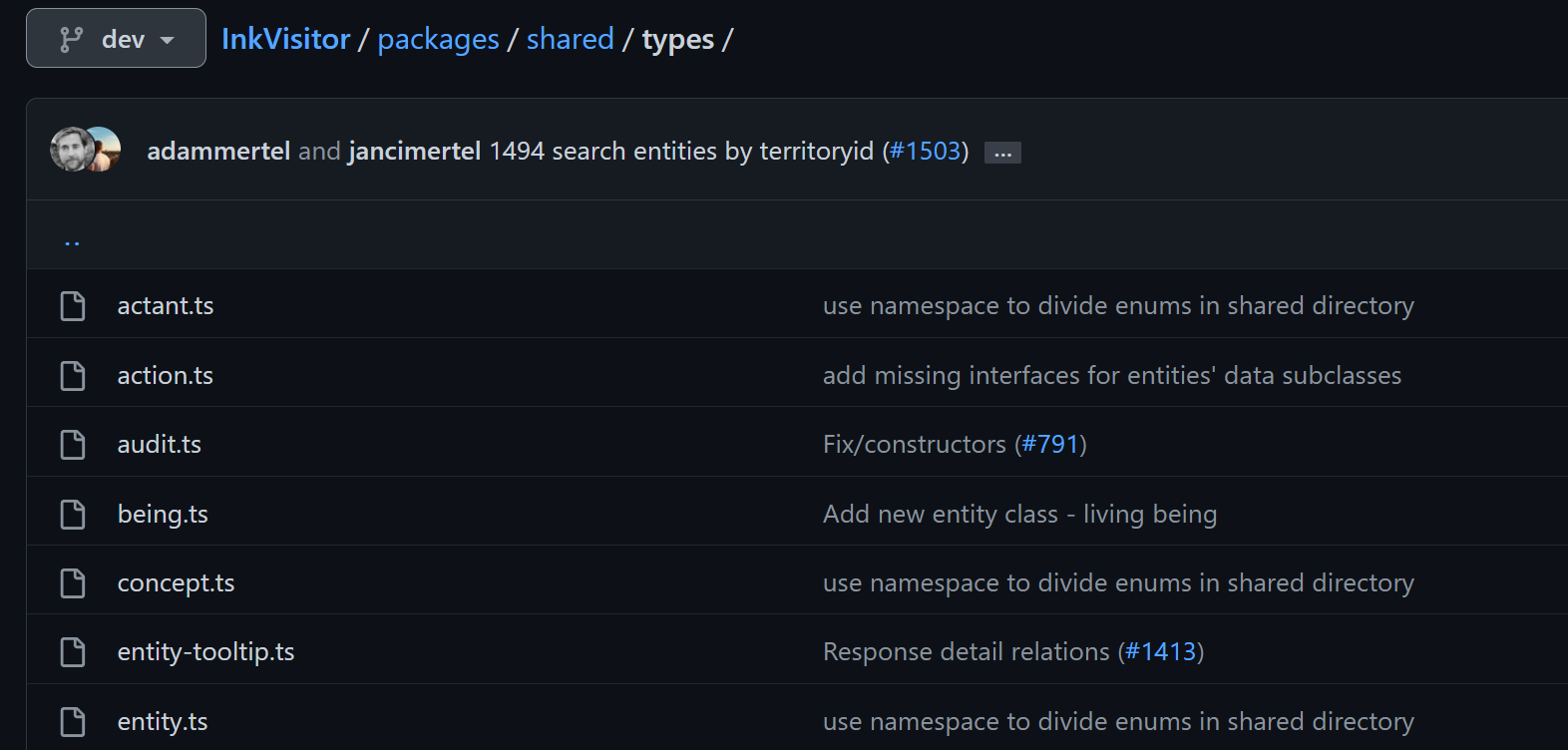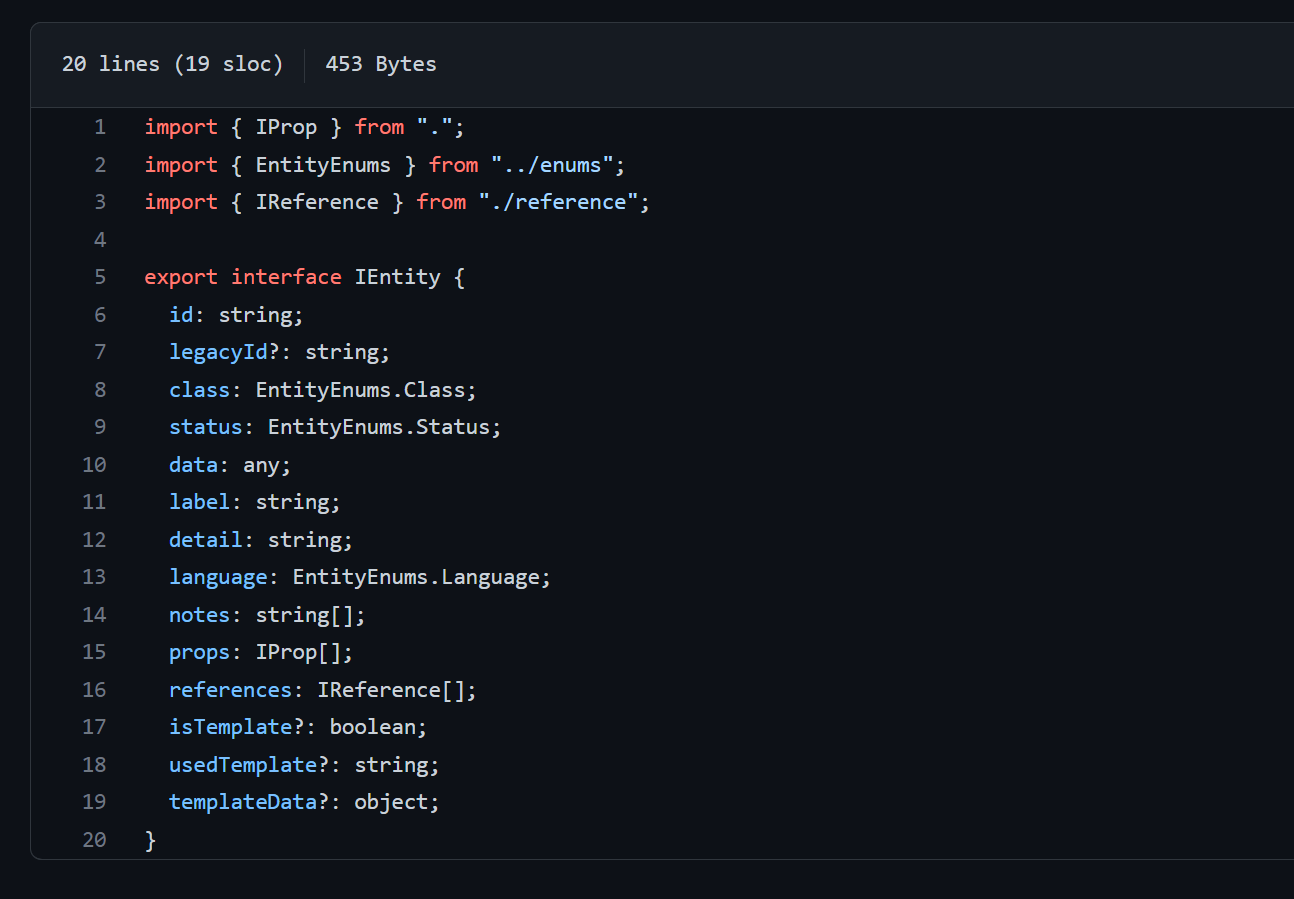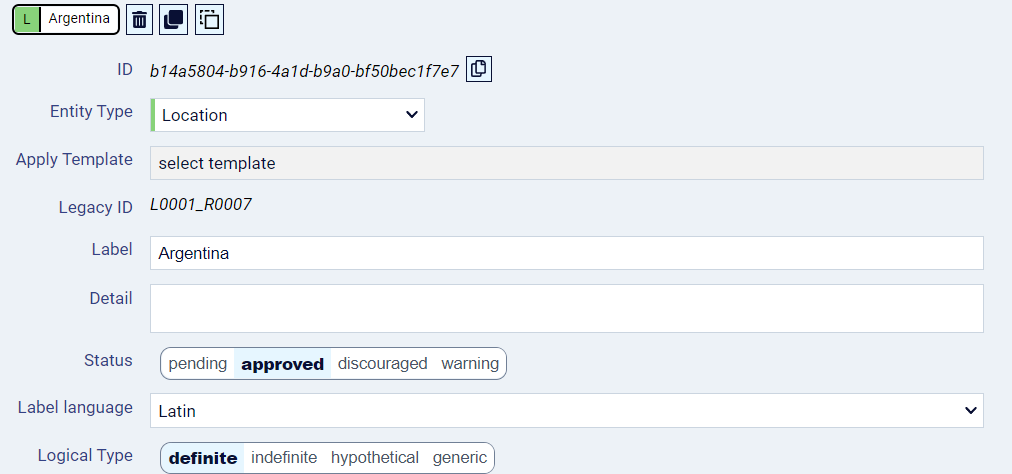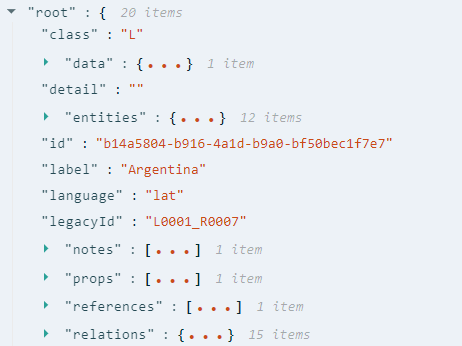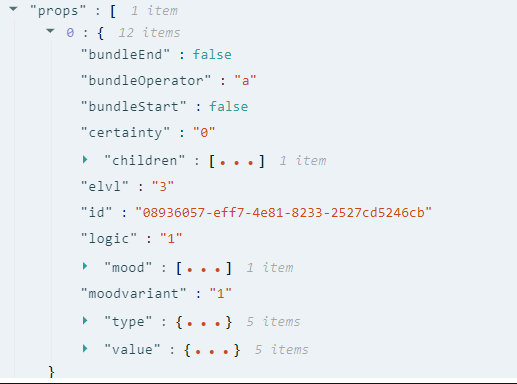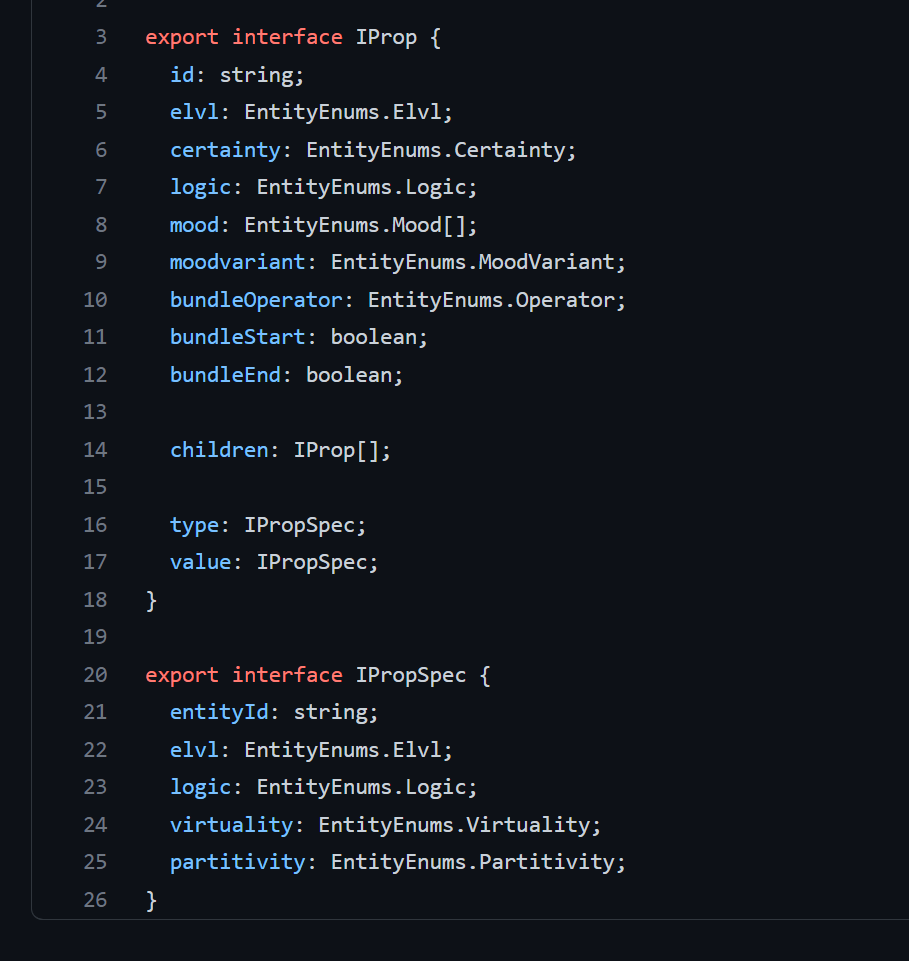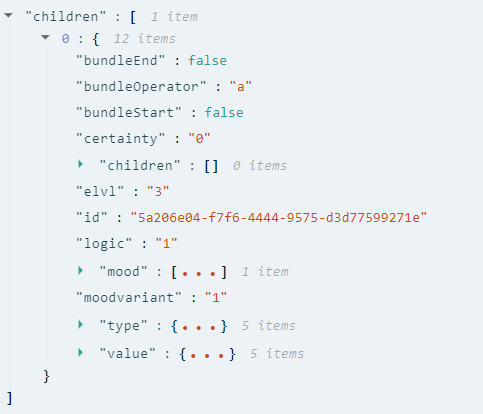Properties
ProblemDefinition
TheProperty inkVisitor terminology can be confusing without initiation. One ofis the headachesmost comesfundamental fromand the specificmost conceptualversatile architecture around "properties" (metaproperties, 2nd meta properties, in-statement properties).
Basic (confusion)
The GitHub readme.md says:
DDMrelation inDDB1CASTEMOworkknowledgewithgraphs which connects entities ofvariousdifferent kinds. Properties is such a special type of relation that it is singled out and treated separately from other Relations.Any property has:
- an origin, i.e. the entity to which it is attached,
- a property type
types;,theseandentities- a property value.
Properties serve for modelling:
- Adjectives, adjectival expressions, and appositions (e.g., qualities and inter-entity relations).
- Adverbs and adverbial expressions (e.g., time, space, and manner of action).
Any entity can have any number of properties.
In
SeeCASTEMO https://github.com/DISSINET/InkVisitorknowledge readme.md.
Entity types
AStatementit isanalwaysEntity typeread with thepurposeverb "has".E.g.:
O John's hat - [has] - C colour - C black
P Anna - [has] - C son - P PeterThere are two kinds of
relatingproperties,other Entities. All statements (as well as all other entities)which haveuniquetheIDs,sameandstructuretheirbutoriginal orderdiffer in thetextcontext from which they are attached to entities.In-statement Properties are attached to entities from within a Statement - i.e. they are attached to entities used as actants of a Statement (in the case of adjectival expressions and appositions) or actions (in the case of adverbial expressions). Thanks to the position of Statements in CASTEMO knowledge graphs, such Properties are included in a Territory hierarchy from which they stem, and usually accompanied with a Reference to the Resource which served for compiling a given Statement.
Meta-level Properties (or, in short, Metaproperties), are properties attached directly to an entity by way of general knowledge.
Sometimes, one level is
preserved,notthereby allowingenough tofollowmodel thedevelopmentproperty. E.g., if Elizabeth II was Queen ofactionthe United Kingdom from 1952 to 2022, it is important to declare both the role and its temporal span, e.g. in thenarrative,following way:
P Elizabeth II - PROP - C office - C Queen of theinterplayUnited Kingdom
PROP - C TRP yyyy-mm-dd: started exactly - V 1952PROP - C TRP yyyy-mm-dd: ended exactly - V 2022It is not Elizabeth who has this time span, but her rule as queen of
havequestionsthe United Kingdom. Thus, CASTEMO knowledge graphs have second-level properties to be able to attach properties to properties, andanswers,theyetc.
Thethird-orderother Entity types covered in the data model are:
Action type
Concept
Person
Group
Beingproperties(typically,toanimal)
(Physical) Object
Location
Event
Value
Text / Text part
Resource
Properties
Documentation on GitHub definesattach properties as
The usesproperties ofproperties include:properties.
ModellingTechnical
adjectives concerning actants.Instantiating Entities to parent types.Defining time and place of action (including in fuzzy terms).Recording other adverbials, for example, those concerning the manner of action, circumstances, causes or consequences of an action.
This is probably not helping much.
Also, from the "programmer's view", is slightly misleading. From a strictly technical sense, properties are direct attributes of the entity (e.g. object Statement has property "label" (type string), which defines name or description). How to deal with it? A person needs to understand how the entity is defined in the code and that the "property" in DDM (=DISSINET Data Model) does not have a strict meaning from OOP programming. From now on, I will call the OOP property concept "attribute". And word property I will reserve for DDM purposes.
Generally, the term "property" in DDM actually has its ontological "has a property" meaning.
E.g. an entity (dog), has a property (color) with the value (brown) like in OOP, just properties in DDM are dynamic. In simple data modelling, we would predefine object (dog) through its class (Dog), in which we would define an attribute color. Each instance of the class would have the attribute color. Just the values of that attribute could differ among the different instances (dogs).
In DDM an entity object has attribute "properties" (technically, the attribute name is props, see below), which is a holder for any number of small "property objects" (type-value pairs), la voila, properties.
For these dynamic properties, a predefined ontology of concept entities is used. All of the dynamically recorded properties bear either
1) type: Concept -> value: Concept or
2) type: Concept -> value: Value
structure.
Where Concept is an entity of type concept and Value is an entity of type value.
To make it more confusing, in the GUI of inkVisitor, these dynamically created properties are called "Meta properties". This is because the core DDM entity is Statement, which has properties like actant1, actant2 or action - properties defined on the level of these in-statement entities are called in-statement properties.
Metaproperties always are inherent GLOBAL attributes of an entity, not contextual - in-statement are CONTEXTUAL.
What is an entity and (meta)property and 2nd order (meta)property in DDM?
An entity in the DDM is foremost a data object (defined by IEntity class) which has
- 1) direct attribute variables like "label" or "id", but it
- 2) also has array variables which can hold other objects.
- Among others, an entity has array attribute props, which holds "properties" in the DDM sense (these are two variable objects composed of type and value pair, e.g. type:"occupation", value:"historian", they are defined by IProp class).
- On these property objects can be hanged 0-to-many of "detailing" properties (2nd order properties)
- E.g. property type:"occupation", value:"historian", can be extended by a property object with type:"research-area", value:"middle-ages".
Let's unpack it. The DDM is technically defined in the inkVisitor typescript *.ts files, which directly correspond to the JSON structure of the collected data in the DDB1 database.
Each entity (e.g. Action) has its own ts file (e.g. action.ts); see the GitHub repository:
In the sense of object-oriented design, each specific entity (e.g. location, person) inherits the definition of the IEntity interface, which is in the entity.ts file. The IEntity is defined like this (screenshot from 16th January 2023):
Example: location entity "Argentina"
Let's have a location record (object) from the Guglielmites dataset with the label "Argentina".
In the inkVisitor GUI, the core entity is displayed like this:
...
In the inkVisitor GUI, the properties which hold its geospatial localisation are displayed like this:
There is one property record with type-value pair, i.e. coordinates "type" (a concept entity, an entity object of type C, this is from DDM predefined ontology) and value object with the string of the coordinate "value". On this record hangs the 2nd order property record defining "localisation precision", where both values of the type-value pair are filled with C entities.
For deeper conceptual understanding, the JSON structure can be more revealing, this is a full entity display:
It has class "L", i.e. it is an entity of type "location", and it has direct attributes, like label with the value "Argentina" and array attributes like props.
It has one property object in the props attribute. This object has a lot of non-intuitive attributes, but the main thing is held in type and value attributes. And this property object also has one 2nd-order property in the attribute children.
The property object is defined by the class IProp, see prop.ts file.
2nd order (meta)properties
The coordinates property record has one property object which extends the information.
This object is a normal instance of the IProp class.
Meaning - its primary information is in type and value attributes. These hold IPropSpec objects, which refer to two concept entities, e.g. here, "localisation precision" and "precise".
Conclusion
The DDM gives priority to the data-collection perspective, it tries to create a general framework for modelling the information in the textual resources. That's why it does not have predefined properties but allows coders to fill them during the data-collection dynamically.
Issues with the terminology
Is the properties, metaproperties and 2nd order metaproperties actually good terminology?
From a non-programmer data-collector perspective, possibly. But anyone trying to understand the DDM needs to understand the properties of the statement entity (Tomas sleeps "at home"), i.e. entities like Person (e.g. Tomas) or Action (sleeps) or Location (at home in Brno Bohunice) are entities, the property is that, what is not actant or action.
While "extending information properties" about entities (e.g. geolocation of the home), which uses the dynamically recorded properties, (the DDM calls them meta properties), are completely different object structures.
They are not just meta; they are NOT entities, while in-statement properties ARE entities.
In-statement properties vsvs. meta-properties?properties
In-statement are those which are DEFINED in the statement, they extend the heart of the statement : action or actant.
Meta-properties are those which are defined on the entity itself.

